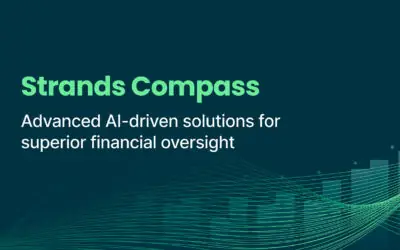Small businesses (SME) represent a huge market for financial services, with an annual spending power of $46 trillion. However, SMEs have historically been underserved by their banks, which keep offering them retail-oriented banking products. SMEs have become dissatisfied with this situation, creating growth opportunities for financial technology and big tech companies. Traditional lenders are finding it increasingly difficult to provide banking value propositions to the owners of small businesses. As these new market participants expand their SME lending efforts, providing customers the best money management platform has been transformed into a need.
Over the last few years, machine learning and artificial intelligence technology have created amazing tools and resources, putting robust solutions at our fingertips. Yet, there has been relatively little innovation in SME banking. Or at least, that’s the impression many SME owners get. Creating compelling solutions for SMEs is an important challenge for banks. How can they achieve this? A financial institution must become trusted problem solvers by listening to its target audience.
What small business banking customers want in a money management platform
Banks can and should play a bigger role in the lives of their SME banking customers. By deploying an AI-driven business financial management (BFM) solution, lenders get to know their customers better and bring them the personalized banking experience that they crave. Still, there are times when banks don’t have the expertise or resources to build such a system in-house, no matter how committed they are to raising their SME-banking game. In such cases, collaborating with a FinTech partner and implementing a white-label solution is the way to go.
There’s a wide range of areas where financial institutions could help small businesses. But what is it that SME owners really need and expect from a money management platform?
1. Advice and insights for growth
40% of the SME customers would consider switching banks due to lack of personalization. A lack of financial literacy is a common problem in SMEs and is often cited as the main reason for their collapse. By aggregating and processing raw data, an AI-powered business financial manager allows banks to understand, anticipate and solve the needs of SMEs. With the help of sophisticated predictive analytics models, BFM provides SME owners with personalized financial advice and next-best-action insights.
2. Stress-free planning tools
50% of SME owners want Tax Planning tools. Half of the small-businesses owners need help planning ahead. That’s why providing them with an interactive financial calendar that shows daily, monthly and yearly spending patterns makes a great deal of difference.
3. A complete overview of their finances
45% of SME owners want Invoice Management and 39% of SME owners want Cash Flow forecasting. Around 80% of small businesses that fail, do so as a result of poor cash flow management. A proven way of empowering SMEs to become more efficient is offering them added-value, contextual, highly synchronized solutions with accounting and invoicing tools.
To thrive in the small-business ecosystem, banks need to work on improving their relationship with SME owners, become their trusted advisor, help them better manage their company and boost their business performance. And partnering with FinTech firms is a cost-efficient, flexible and proven way to achieve it. Strands BFM helps business customers to better forecast and manage their cash-flow by aggregating accounts and invoices into a single platform. Furthermore, Strands’ Open Hub solution is a simple interface that leverages Open Banking to connect multiple external services securely in one place. It offers customers an overview of their finances and the ability to connect to third-party services.



